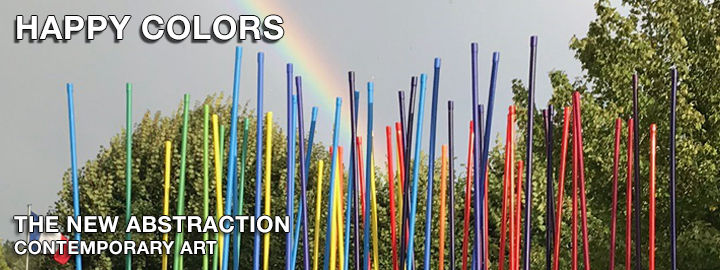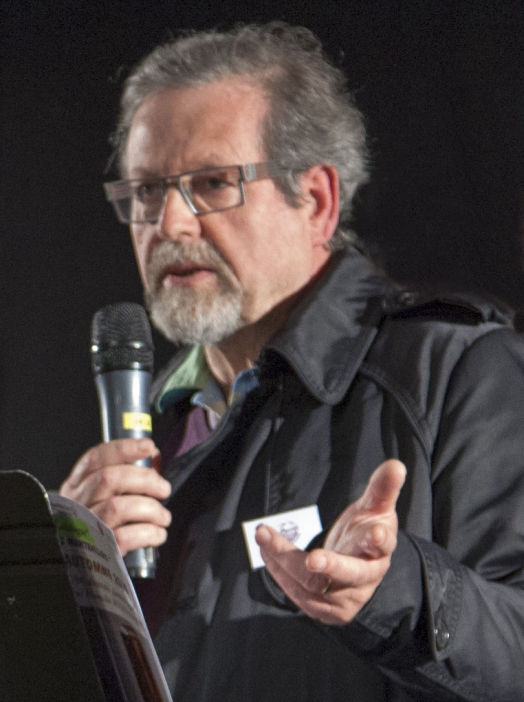Vers une abstraction des transparences :
C’est en observant la projection des couleurs des vitraux qui forment des images abstraites éphémères que s’est développé son intérêt pour la couleur lumineuse pure.
En 1980, il définit une théorie sur les 4 couleurs pures primordiales de la lumière et commence à développer un travail pictural abstrait.
La lumière et ses champs chromatiques ne sont qu’énergies vibratoires. Ils ont besoin de traverser des éléments transparents comme l’air et l’eau pour se révéler à nous.
L’aspect transparent des couleurs et son rendu pictural sont un des aspects importants de son travail.
Apporter la transparence à la couleur, c’est la rendre plus lumineuse et la rapprocher de son état originel la lumière blanche.
La transparence de la couleur par superposition permet la transmutation de la couleur matière en couleur lumière.
Son répertoire de formes s’inspire des constructions primitives souvent géométriques que l’on trouve dans la nature.
Vibrations des couleurs et synchronicité :
Les vibrations des couleurs transparentes associées à une grande variété de formes géométriques déclenchent sur celui qui regarde des émotions et des énergies positives.
Dans son processus créatif, il lui arrive de provoquer le hasard pour obtenir d’ ”heureuses coïncidences” (Carl Gustav JUNG appelle cela la synchronicité qui se retrouve dans des domaines variés comme la physique quantique et la biologie).
Le monde est en perpétuel changement ce qui l’incite à continuer ses recherches plastiques vers de nouvelles voies et de nouveaux supports.
Son travail est avant tout pictural. Il est cependant également édité sur différents supports pour en permettre l’accès au plus grand nombre : estampes numériques sur papier, Subligraphie© sur aluminium et animations vidéos numériques.
Ses œuvres hautes en couleurs s’adaptent aux très grands formats comme l’habillage architectural urbain. Il réalise en 2018 pour le Bureau d’Information Touristique de Giverny une œuvre murale : ”Le souffle d’Iris”.
©2025 Michel DEBULLY Paintings, images, animations, texts. All rights reserved. ©ADAGP
©2025 Alexis ELIEN Texts. All rights reserved.



